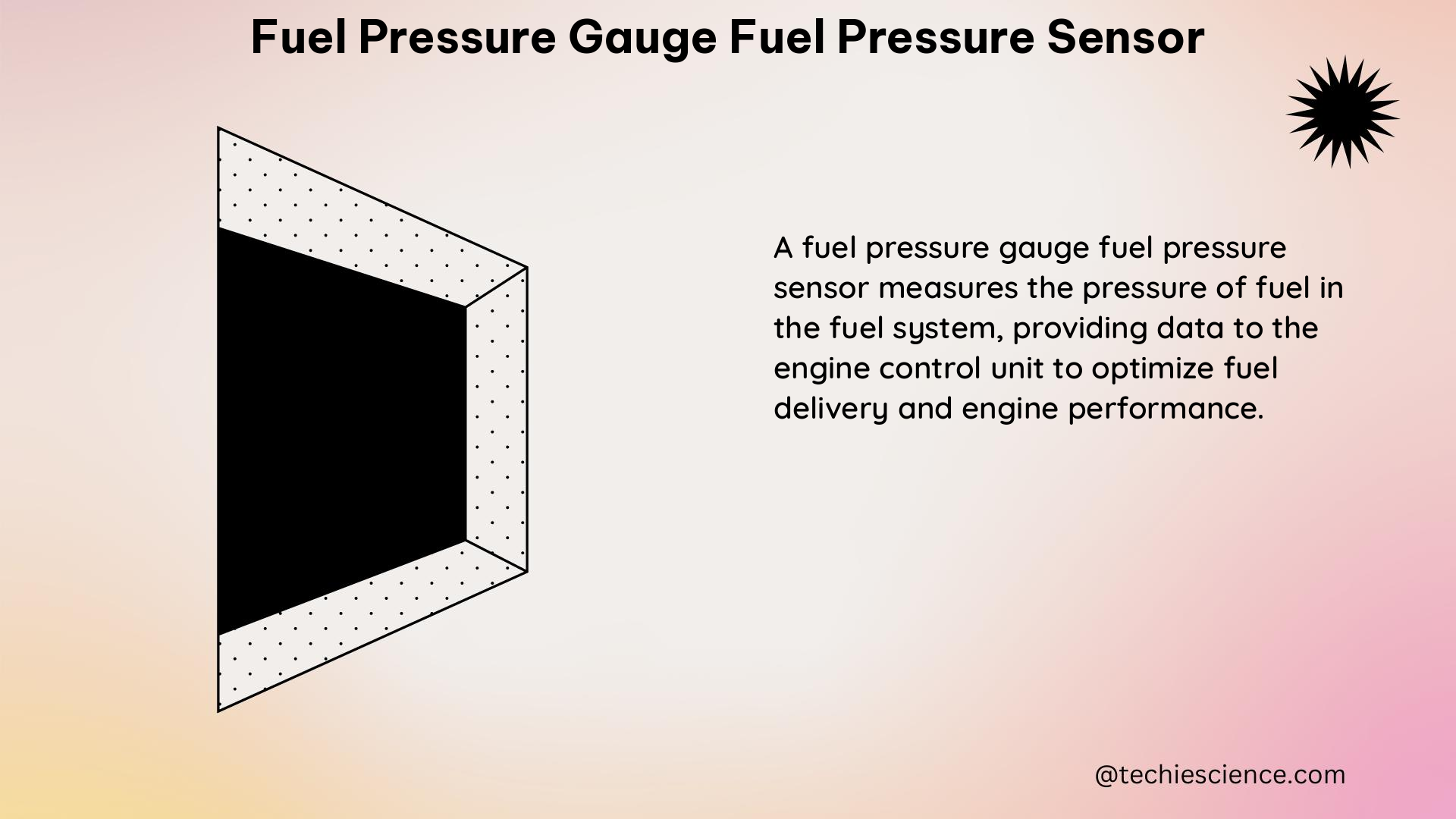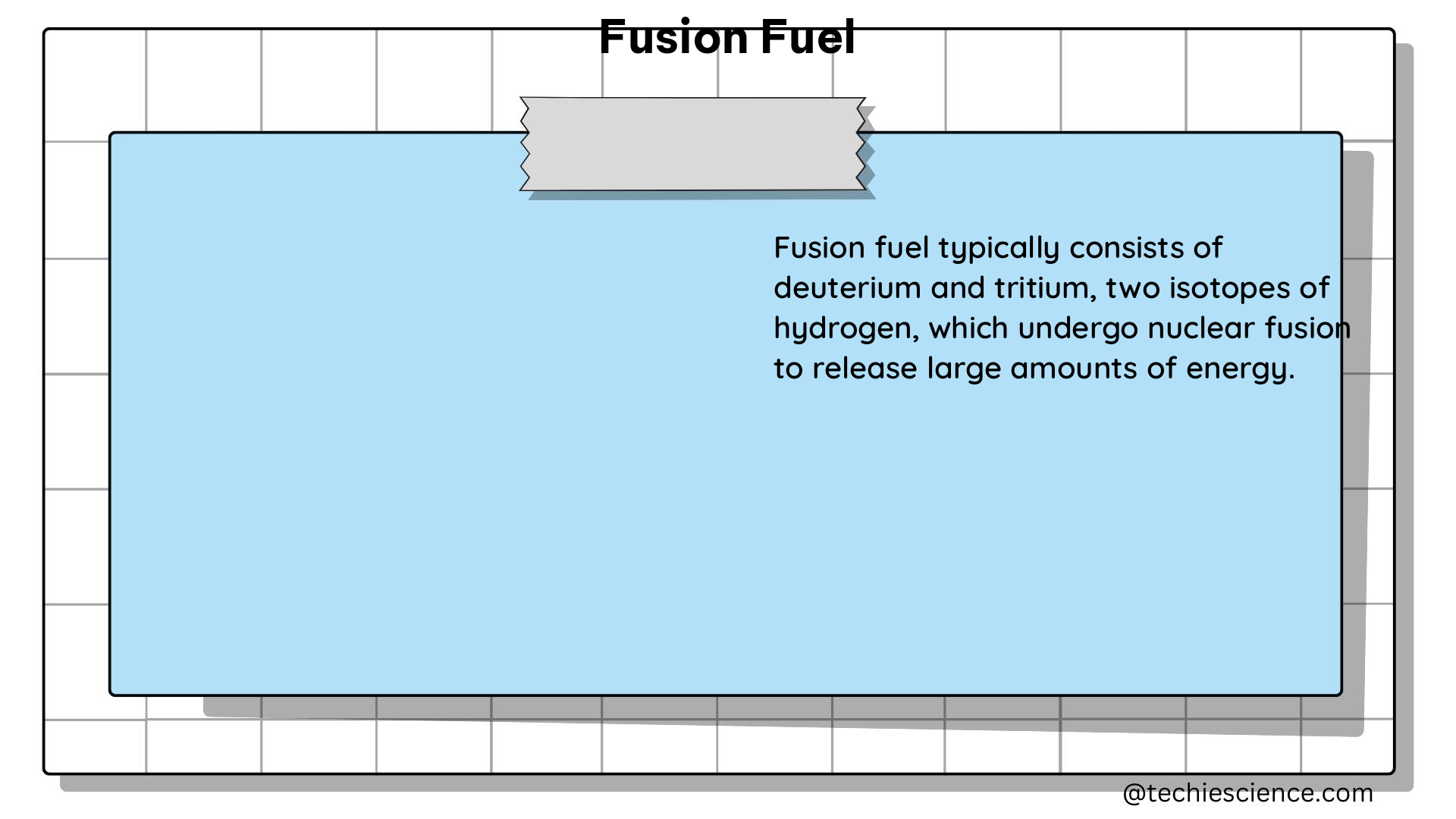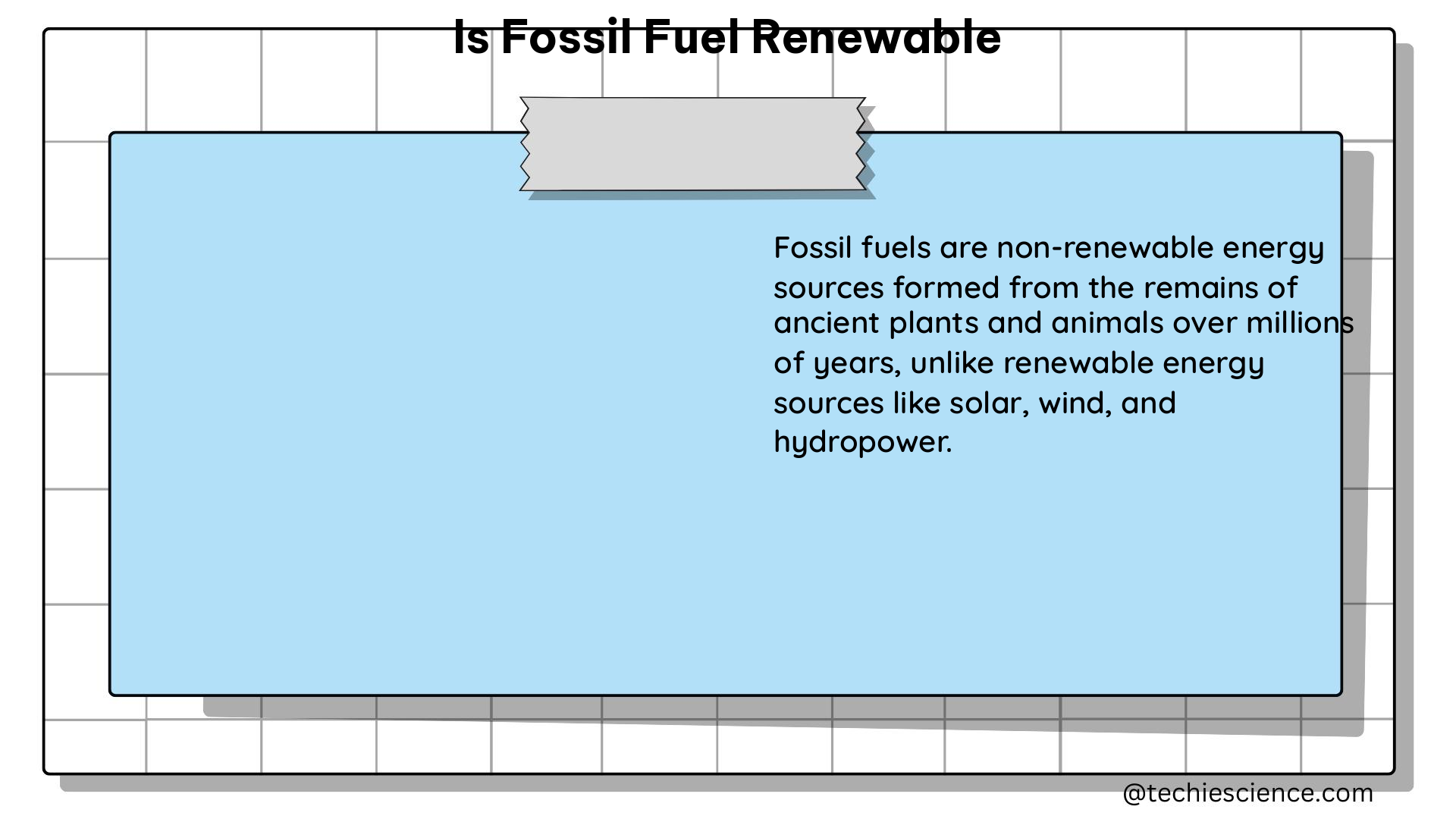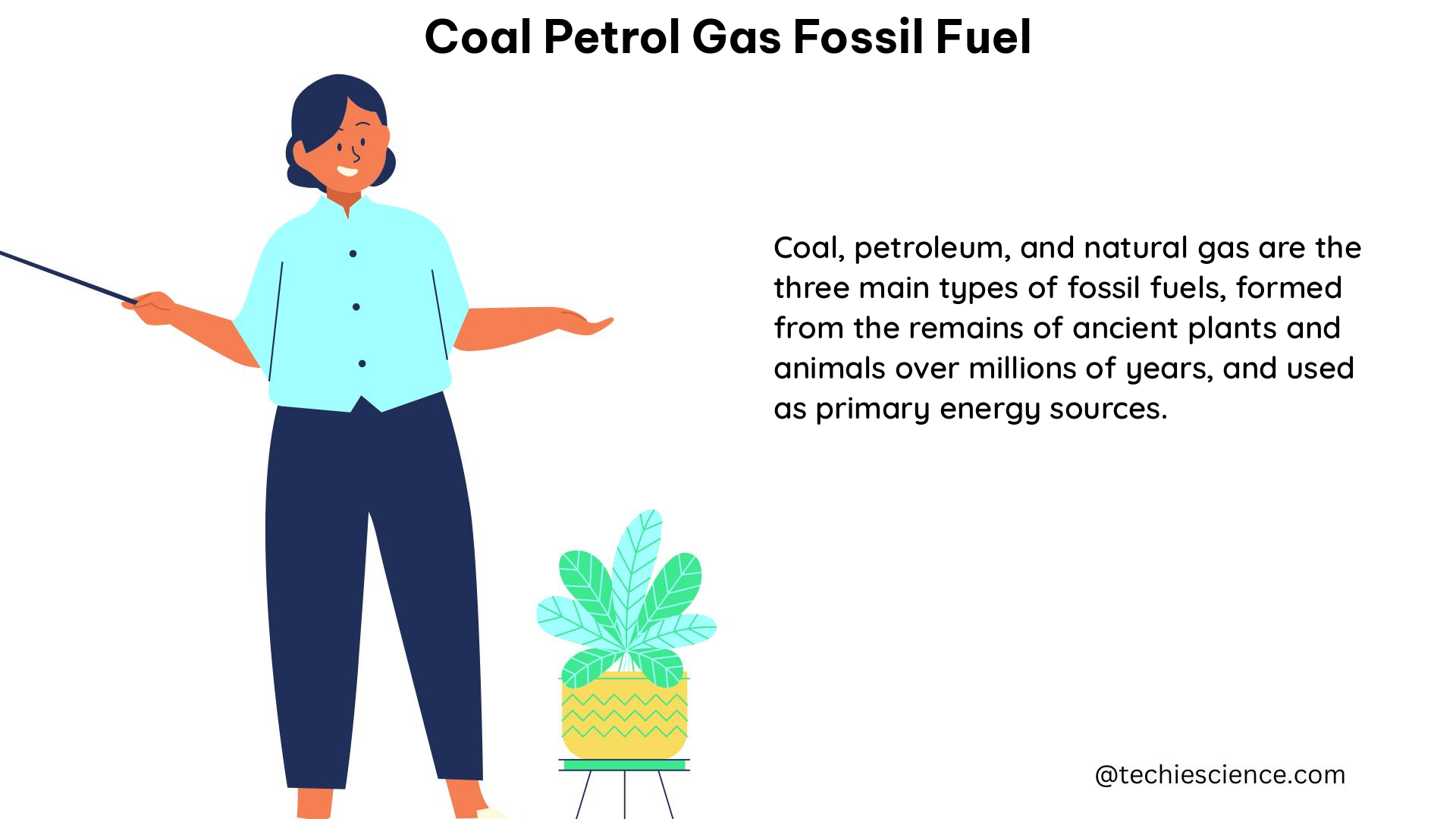The fuel pressure gauge and sensor are critical components in a vehicle’s fuel system, responsible for maintaining and monitoring the pressure of fuel delivered to the engine. These devices play a vital role in ensuring optimal engine performance, fuel efficiency, and emission control. This comprehensive guide will delve into the technical specifications, diagnostic procedures, and troubleshooting tips related to fuel pressure gauges and sensors, providing a valuable resource for science students and automotive enthusiasts alike.
Technical Specifications of Fuel Pressure Gauges and Sensors
Fuel pressure gauges and sensors come in various types, each with specific technical specifications tailored to the demands of the automotive industry. Let’s explore the key features and capabilities of these components:
Fuel Pressure Sensor Types
-
Resistive Fuel Pressure Sensors: These sensors use a variable resistor, typically a strain gauge or piezoresistive element, to measure the fuel pressure. The resistance changes proportionally to the applied pressure, allowing the engine control unit (ECU) to determine the fuel pressure.
-
Capacitive Fuel Pressure Sensors: These sensors utilize a capacitive element that changes its capacitance in response to the applied fuel pressure. The ECU can then interpret the capacitance change to determine the fuel pressure.
-
Piezoelectric Fuel Pressure Sensors: These sensors employ the piezoelectric effect, where a crystal material generates an electrical signal when subjected to mechanical stress (pressure). The ECU can then convert the electrical signal into a fuel pressure reading.
-
Electromagnetic Fuel Pressure Sensors: These sensors use a magnetic field to measure the fuel pressure. The fuel pressure causes a displacement of a ferromagnetic element, which is then detected by the sensor and converted into a pressure reading.
Technical Specifications of Fuel Pressure Sensors
-
Pressure Range: Fuel pressure sensors are designed to measure a specific range of pressures, typically from 0 to 100 psi (0 to 6.9 bar) for gasoline engines and up to 2,000 psi (138 bar) for diesel engines.
-
Output Signal: Fuel pressure sensors can have different output signals, such as a 0-5V analog voltage, a 4-20mA current loop, or a digital signal (e.g., PWM, CAN bus).
-
Accuracy and Linearity: Fuel pressure sensors are designed to have high accuracy, typically within 1-2% of the full-scale range, and good linearity to ensure a consistent and reliable pressure measurement.
-
Response Time: The response time of a fuel pressure sensor is crucial, as it needs to quickly detect changes in fuel pressure to provide real-time data to the ECU. Typical response times range from a few milliseconds to tens of milliseconds.
-
Operating Temperature Range: Fuel pressure sensors must be able to withstand the harsh environmental conditions found in the engine compartment, with operating temperature ranges typically between -40°C to 125°C (-40°F to 257°F).
-
Durability and Reliability: Fuel pressure sensors are designed to be highly durable and reliable, with features like stainless steel housings, corrosion-resistant materials, and robust sealing to withstand the demanding automotive environment.
-
Compatibility: Fuel pressure sensors are often designed to be specific to a particular make, model, and year of a vehicle, ensuring a perfect fit and integration with the vehicle’s fuel system and ECU.
Fuel Pressure Gauge Specifications
Fuel pressure gauges are used to visually display the fuel pressure in the system, providing the driver or technician with a real-time indication of the fuel pressure. Some key specifications of fuel pressure gauges include:
-
Pressure Range: Fuel pressure gauges are available in various pressure ranges, typically from 0-100 psi (0-6.9 bar) for gasoline engines and up to 0-2,000 psi (0-138 bar) for diesel engines.
-
Dial Size and Mounting: Fuel pressure gauges come in different dial sizes, typically ranging from 2 inches (50 mm) to 4 inches (100 mm), and can be mounted in various locations, such as on the dashboard, under the hood, or in a separate gauge cluster.
-
Accuracy and Precision: Fuel pressure gauges are designed to provide accurate and precise readings, with typical accuracy within 2-3% of the full-scale range.
-
Durability and Vibration Resistance: Fuel pressure gauges must be able to withstand the harsh conditions of the engine compartment, including vibrations, temperature extremes, and exposure to various automotive fluids.
-
Electrical or Mechanical Connection: Fuel pressure gauges can be either electrically connected to the fuel pressure sensor or mechanically connected directly to the fuel line, depending on the specific application and vehicle requirements.
By understanding the technical specifications of fuel pressure gauges and sensors, technicians and enthusiasts can ensure the proper selection, installation, and maintenance of these critical components, ultimately contributing to the overall performance and reliability of the vehicle’s fuel system.
Diagnostic Procedures for Fuel Pressure Issues

Diagnosing fuel pressure issues is a crucial step in maintaining a vehicle’s fuel system. By collecting quantifiable data and following a systematic approach, technicians can accurately identify and resolve fuel pressure-related problems. Let’s explore the diagnostic procedures in detail:
Fuel Pressure Diagnostic Trouble Codes (DTCs)
The engine control unit (ECU) continuously monitors the fuel pressure in the system and sets diagnostic trouble codes (DTCs) when it detects any abnormalities. Some common fuel pressure-related DTCs include:
- DTC P0171 – System Too Lean: This DTC is set when the fuel trim is higher than the specification under closed-loop fuel control, indicating a system that is running too lean.
- DTC P0172 – System Too Rich: This DTC is set when the fuel trim is lower than the specification under closed-loop fuel control, indicating a system that is running too rich.
- DTC P0191 – Fuel Rail Pressure Sensor Circuit Range/Performance: This DTC is set when the fuel pressure sensor signal is out of the expected range or exhibits performance issues.
- DTC P0192 – Fuel Rail Pressure Sensor Circuit Low Input: This DTC is set when the fuel pressure sensor signal is lower than the expected range.
- DTC P0193 – Fuel Rail Pressure Sensor Circuit High Input: This DTC is set when the fuel pressure sensor signal is higher than the expected range.
By analyzing the specific DTC and the associated diagnostic information, technicians can narrow down the potential causes of the fuel pressure issue, such as a malfunctioning fuel pump, a faulty fuel pressure regulator, or a problem with the fuel pressure sensor itself.
Fuel Pressure Measurement and Diagnosis
To diagnose fuel pressure issues, technicians will typically use a fuel pressure gauge or a digital multimeter to measure the fuel pressure at various points in the fuel system. This process involves the following steps:
-
Fuel Pressure Measurement at Idle: The technician will measure the fuel pressure at idle to ensure it falls within the manufacturer’s specified range. This can help identify issues such as a faulty fuel pump or a problem with the fuel pressure regulator.
-
Fuel Pressure Measurement under Load: The technician will measure the fuel pressure while the engine is under load, such as during acceleration or at high RPMs. This can help identify issues with the fuel pump’s ability to maintain the required pressure under high-demand conditions.
-
Fuel Pressure Measurement with the Engine Off: The technician will measure the fuel pressure with the engine off to check for any leaks or issues with the fuel system’s ability to hold pressure.
-
Fuel Pressure Measurement with the Fuel Pump Activated: The technician will activate the fuel pump (without the engine running) and measure the fuel pressure to ensure the pump is delivering the expected pressure.
By collecting and analyzing the fuel pressure data, technicians can pinpoint the root cause of the issue, whether it’s a problem with the fuel pump, the fuel pressure regulator, the fuel pressure sensor, or any other component in the fuel system.
Fuel Pressure Diagnostic Procedures
To diagnose fuel pressure issues, technicians may follow a systematic approach, such as the one outlined below:
-
Verify the Fuel Pressure Sensor Signal: Technicians will first check the fuel pressure sensor signal to ensure it is within the expected range and is providing accurate data to the ECU.
-
Check for Fuel Leaks: Technicians will inspect the fuel system for any visible leaks, which can lead to a drop in fuel pressure.
-
Inspect the Fuel Pump and Fuel Pump Relay: Technicians will check the fuel pump and its associated relay to ensure they are functioning correctly and delivering the required fuel pressure.
-
Evaluate the Fuel Pressure Regulator: Technicians will check the fuel pressure regulator for proper operation, as a malfunctioning regulator can cause fuel pressure issues.
-
Perform a Fuel Pressure Test: Technicians will use a fuel pressure gauge to measure the fuel pressure at various points in the system, as described in the previous section.
-
Analyze the Fuel Pressure Data: Technicians will compare the measured fuel pressure values to the manufacturer’s specifications and use the data to identify the root cause of the issue.
-
Verify the Repair: After addressing the identified issue, technicians will recheck the fuel pressure to ensure the problem has been resolved and the system is operating within the expected parameters.
By following a structured diagnostic approach and collecting quantifiable data, technicians can accurately identify and resolve fuel pressure-related problems, ensuring the optimal performance and reliability of the vehicle’s fuel system.
Troubleshooting and DIY Fuel Pressure Gauge and Sensor Maintenance
Maintaining and troubleshooting fuel pressure gauges and sensors can be a valuable skill for science students and automotive enthusiasts. Let’s explore some common issues and DIY maintenance tips:
Fuel Pressure Gauge Issues
-
Wildly Bouncing Fuel Pressure Gauge: A wildly bouncing fuel pressure gauge at idle could be due to a faulty adjustable fuel pressure regulator (AFPR). In this case, replacing the diaphragm and gasket of the AFPR might solve the problem.
-
Inaccurate Fuel Pressure Readings: If the fuel pressure gauge is providing inaccurate readings, the issue could be due to a problem with the gauge itself, the fuel pressure sensor, or the wiring between the two components. Troubleshooting may involve checking the gauge’s calibration, inspecting the sensor for damage, and verifying the electrical connections.
-
Intermittent Fuel Pressure Gauge Readings: Intermittent or fluctuating fuel pressure gauge readings can be caused by issues such as a loose electrical connection, a faulty fuel pressure sensor, or a problem with the vehicle’s electrical system. Thorough inspection and testing of the components and wiring are necessary to identify and resolve the issue.
Fuel Pressure Sensor Maintenance and Troubleshooting
-
Sensor Calibration: Fuel pressure sensors may require periodic calibration to ensure accurate readings. This process typically involves comparing the sensor’s output to a known reference pressure and adjusting the sensor’s calibration parameters accordingly.
-
Sensor Cleaning: Over time, the fuel pressure sensor’s diaphragm or sensing element can become fouled or contaminated, leading to inaccurate readings. Carefully cleaning the sensor according to the manufacturer’s instructions can help restore its performance.
-
Sensor Replacement: If the fuel pressure sensor is malfunctioning or damaged, replacement may be necessary. When installing a new sensor, it’s important to ensure proper compatibility with the vehicle’s fuel system and ECU.
-
Wiring and Electrical Connections: Checking the wiring and electrical connections between the fuel pressure sensor and the ECU is crucial. Loose, corroded, or damaged connections can lead to sensor signal issues and fuel pressure-related problems.
-
Vacuum Leaks: Vacuum leaks in the fuel system can affect the fuel pressure and cause issues with the fuel pressure sensor readings. Technicians should inspect the fuel system for any potential vacuum leaks and address them accordingly.
-
Fuel and Spark Tables: Ensuring the proper fuel and spark tables are programmed in the ECU is essential for maintaining optimal engine performance and fuel pressure. Incorrect fuel and spark tables can lead to fuel pressure issues and other drivability problems.
By understanding the common issues and performing basic maintenance on fuel pressure gauges and sensors, science students and automotive enthusiasts can contribute to the overall health and performance of a vehicle’s fuel system.
Conclusion
The fuel pressure gauge and sensor are critical components in a vehicle’s fuel system, responsible for maintaining and monitoring the pressure of fuel delivered to the engine. By understanding the technical specifications, diagnostic procedures, and troubleshooting tips related to these components, science students and automotive enthusiasts can develop a comprehensive understanding of their role and importance in ensuring optimal engine performance, fuel efficiency, and emission control.
Through this guide, we have explored the various types of fuel pressure sensors, their technical specifications, and the diagnostic procedures used to identify and resolve fuel pressure-related issues. We have also discussed common troubleshooting and DIY maintenance tips for fuel pressure gauges and sensors, empowering readers to take a hands-on approach to maintaining their vehicle’s fuel system.
By applying the knowledge and techniques presented in this guide, science students and automotive enthusiasts can contribute to the overall health and reliability of a vehicle’s fuel system, ultimately enhancing the performance and longevity of their vehicles.


